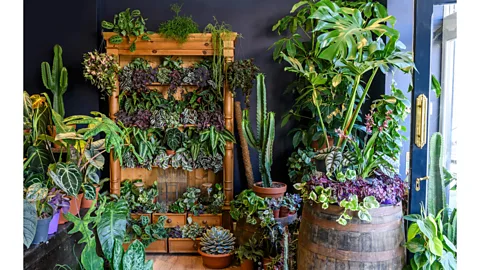Home gardening and indoor plants are wonderful ways to bring nature into your living space, improve air quality, and enhance your well-being. Whether you have a large backyard or just a small apartment, you can grow a variety of plants that will thrive in different environments. Here are some tips for both home gardening and indoor plants:
Home Gardening Choose the Right Location: Select a spot that gets enough sunlight for your plants. Most vegetables and flowers need 6-8 hours of direct sunlight daily. Soil Quality: Healthy soil is crucial. Test your soil to ensure it has the right pH and nutrient levels. You can also enrich soil with compost to improve its quality. Watering: Ensure proper drainage in your garden to prevent waterlogging. Water your plants early in the morning to avoid evaporation losses and disease. Mulching: Use mulch to retain moisture, regulate soil temperature, and reduce weed growth. Companion Planting: Some plants grow better when placed near others. For example, planting marigolds near tomatoes can help repel pests. Seasonal Planting: Know your region’s growing season and plant accordingly. Vegetables like tomatoes and peppers grow best in the warmer months, while cooler weather plants like spinach and kale thrive in fall. Indoor Plants Light Requirements: Different indoor plants have varying light needs. Some prefer bright, direct sunlight, while others do well in lower light conditions. Be sure to place plants according to their specific light requirements. Watering: Indoor plants often require less water than outdoor plants, especially in lower light conditions. Overwatering can lead to root rot. A good rule of thumb is to water when the top inch of the soil is dry. Humidity: Many indoor plants, like ferns and orchids, prefer higher humidity. If your home is dry, consider using a humidity tray, misting your plants, or using a humidifier. Container and Drainage: Ensure that pots have drainage holes to avoid water buildup. This is important to prevent root rot. Fertilization: Indoor plants generally need less fertilizer than outdoor ones. Use a balanced, water-soluble fertilizer during the growing season (spring and summer). Common Indoor Plants: Low light: Snake plant, pothos, peace lily Bright light: Succulents, cacti, spider plants Air purifiers: Aloe vera, bamboo palm, English ivy Benefits of Home Gardening & Indoor Plants Air Purification: Plants can improve air quality by absorbing toxins like formaldehyde and benzene and releasing oxygen. Stress Reduction: Studies show that tending to plants can lower stress levels and increase feelings of well-being. Aesthetic Value: Plants enhance the beauty of your space, adding color and life to your home or garden. Sustainability: Growing your own vegetables and herbs at home reduces your carbon footprint and provides fresh produce.
With the right care and attention, both home gardening and indoor plants can thrive, transforming your space into a vibrant and healthy environment.


